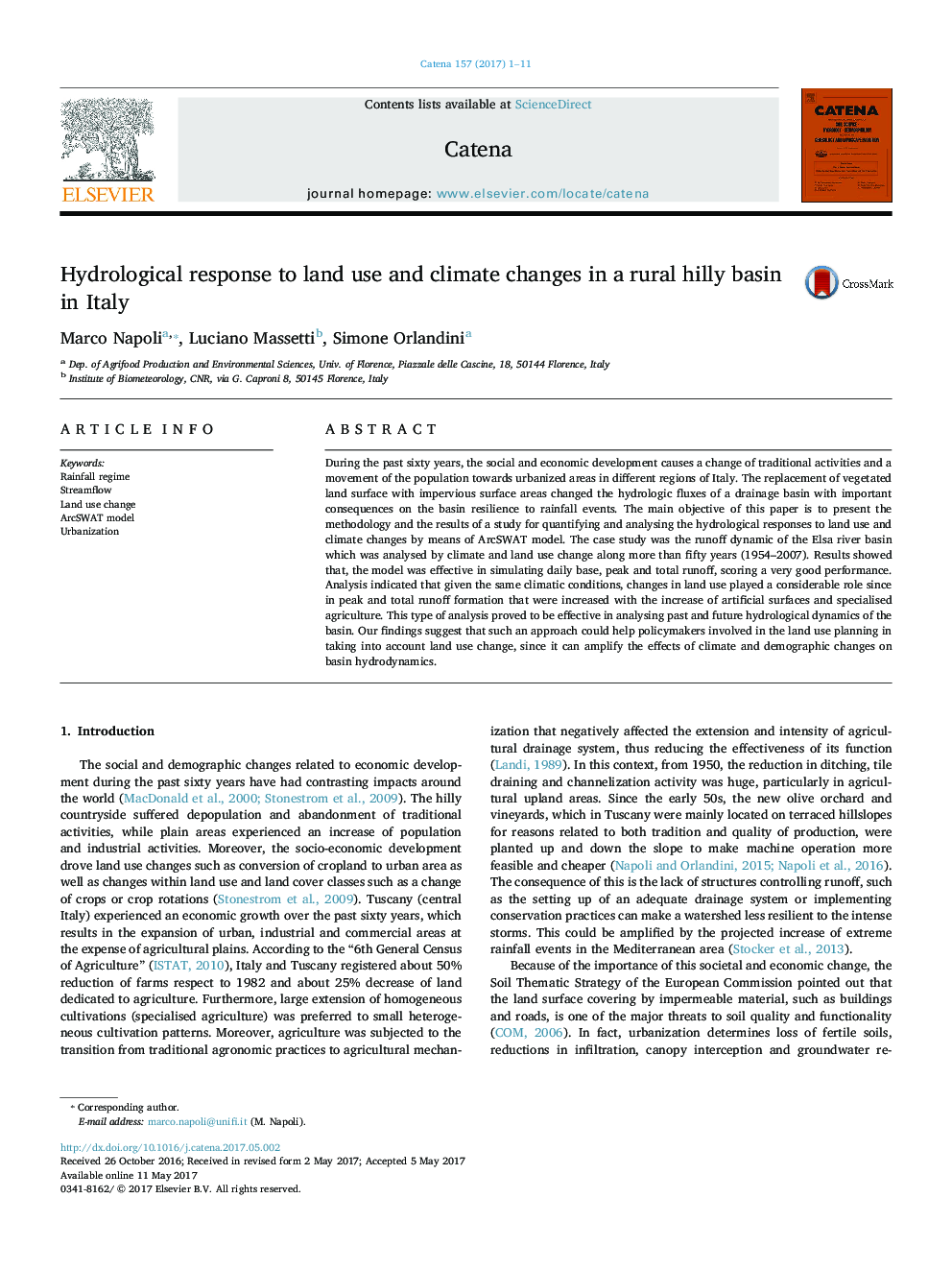| Article ID | Journal | Published Year | Pages | File Type |
|---|---|---|---|---|
| 5769841 | CATENA | 2017 | 11 Pages |
â¢Increase of artificial surfaces and specialised agriculture reduced watershed runoff.â¢ArcSWAT model can effectively simulate the response of watershed hydrology.â¢Effects of climate and land use change interact in runoff generation, but can be separated.â¢The method followed can help policymakers to plan sustainable land use incentives.
During the past sixty years, the social and economic development causes a change of traditional activities and a movement of the population towards urbanized areas in different regions of Italy. The replacement of vegetated land surface with impervious surface areas changed the hydrologic fluxes of a drainage basin with important consequences on the basin resilience to rainfall events. The main objective of this paper is to present the methodology and the results of a study for quantifying and analysing the hydrological responses to land use and climate changes by means of ArcSWAT model. The case study was the runoff dynamic of the Elsa river basin which was analysed by climate and land use change along more than fifty years (1954-2007). Results showed that, the model was effective in simulating daily base, peak and total runoff, scoring a very good performance. Analysis indicated that given the same climatic conditions, changes in land use played a considerable role since in peak and total runoff formation that were increased with the increase of artificial surfaces and specialised agriculture. This type of analysis proved to be effective in analysing past and future hydrological dynamics of the basin. Our findings suggest that such an approach could help policymakers involved in the land use planning in taking into account land use change, since it can amplify the effects of climate and demographic changes on basin hydrodynamics.
